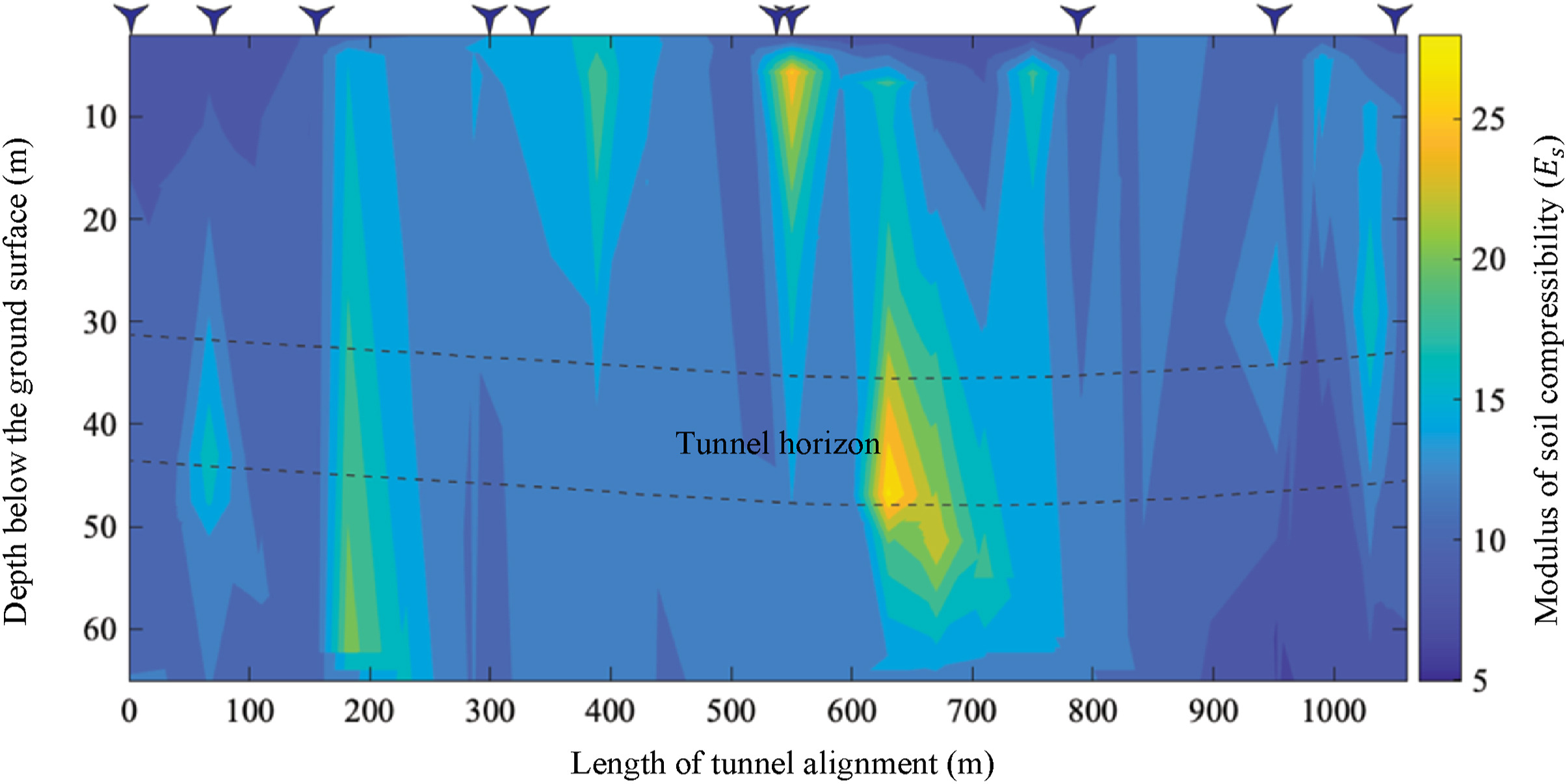JRMGE / Vol 14 / Issue 4
Effectiveness of predicting tunneling-induced ground settlements using machine learning methods with small datasets
Linan Liu, Wendy Zhou, Marte Gutierrez
Show More
a Department of Geology and Geological Engineering, Colorado School of Mines, Golden, CO, 80401, USA
b Department of Civil and Environmental Engineering, Colorado School of Mines, Golden, CO, 80401, USA
2022, 14(4): 1028-1041. doi:10.1016/j.jrmge.2021.08.018
Received: 2021-03-31 / Revised: 2021-07-07 / Accepted: 2021-08-20 / Available online: 2021-12-11
2022, 14(4): 1028-1041.
doi:10.1016/j.jrmge.2021.08.018
Received: 2021-03-31
Revised: 2021-07-07
Accepted: 2021-08-20
Available online: 2021-12-11
Prediction of tunneling-induced ground settlements is an essential task, particularly for tunneling in urban settings. Ground settlements should be limited within a tolerable threshold to avoid damages to aboveground structures. Machine learning (ML) methods are becoming popular in many fields, including tunneling and underground excavations, as a powerful learning and predicting technique. However, the available datasets collected from a tunneling project are usually small from the perspective of applying ML methods. Can ML algorithms effectively predict tunneling-induced ground settlements when the available datasets are small? In this study, seven ML methods are utilized to predict tunneling-induced ground settlement using 14 contributing factors measured before or during tunnel excavation. These methods include multiple linear regression (MLR), decision tree (DT), random forest (RF), gradient boosting (GB), support vector regression (SVR), back-propagation neural network (BPNN), and permutation importance-based BPNN (PI-BPNN) models. All methods except BPNN and PI-BPNN are shallow-structure ML methods. The effectiveness of these seven ML approaches on small datasets is evaluated using model accuracy and stability. The model accuracy is measured by the coefficient of determination (R2) of training and testing datasets, and the stability of a learning algorithm indicates robust predictive performance. Also, the quantile error (QE) criterion is introduced to assess model predictive performance considering underpredictions and overpredictions. Our study reveals that the RF algorithm outperforms all the other models with the highest model prediction accuracy (0.9) and stability (3.02 × 10−27). Deep-structure ML models do not perform well for small datasets with relatively low model accuracy (0.59) and stability (5.76). The PI-BPNN architecture is proposed and designed for small datasets, showing better performance than typical BPNN. Six important contributing factors of ground settlements are identified, including tunnel depth, the distance between tunnel face and surface monitoring points (DTM), weighted average soil compressibility modulus (ACM), grouting pressure, penetrating rate and thrust force.
Keywords: Ground settlements, Tunneling, Machine learning, Small dataset, Model accuracy, Model stability, Feature importance
Article Data
Author(s) Information
Wendy Zhou

Dr. Wendy Zhou is a Professor at the Department of Geology and Geological Engineering and the Director of the GIS & GeoInformatics Program, Colorado School of Mines in Golden, Colorado, USA. Wendy Zhou received her Ph.D. degree in geological engineering from Missouri University of Science & Technology, USA, in 2001. Her research interests include: (1) geographic information system (GIS) and remote sensing applications in geohazard analysis, environmental impact study, and natural resource management, (2) interferometric synthetic aperture radar (InSAR) and machine learning applications in ground movement monitoring and landslide assessment, (3) rock mass characterization, and (4) numerical modeling for the ground thermal regime and stress-strain distribution in the rock or soil mass. She has supervised more than 30 masters and 9 Ph.D. students. She has published more than 60 papers in peer-reviewed journals or peer-reviewed conference proceedings. She has also contributed to 7 book chapters. She has been serving as an Associate Editor of the Journal of Applied Remote Sensing since 2014 and a Topic Editor of Remote Sensing since 2020.

